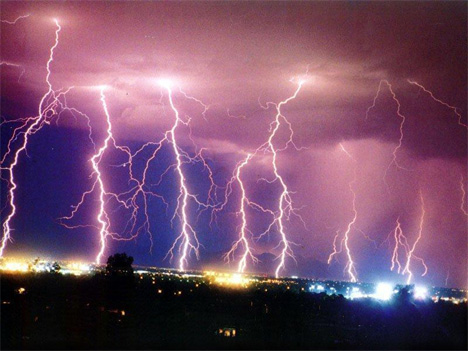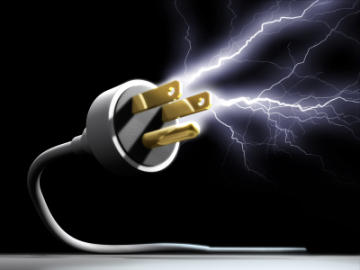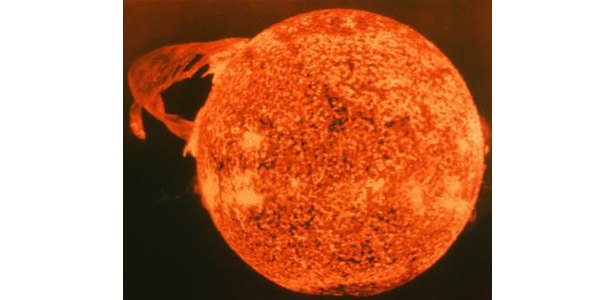Energy transforms...
from www.dictionary.com:
energy (ěn'ər-jē) Pronunciation Key
The capacity or power to do work, such as the capacity to movean object (of a given mass) by the application of force. Energycan exist in a variety of forms, such as electrical, mechanical,chemical, thermal, or nuclear, and can be transformed from oneform to another. It is measured by the amount of work done,usually in joules or watts.
A. Types of Energy:
1) Potential Energy is the energy of position. An object's mass andheight give an object its potential energy. The greater the mass or the higher an object is, the more P.E. an object has.
Potential Energy = (mass)(gravity)(height) or P.E. = mgh
2) Kinetic Energy is the energy of movement, motion. An object's massand speed/velocity determine its kinetic energy. The greater the mass and the more speed an object has, the more K.E. an object has.
Kinetic Energy = 1/2(mass)(velocity)(velocity) or K.E. = 1/2 mv2
B. Forms of Energy
Energy can come in a variety of forms.
1. Atomic/Nuclear Energy is produced when you split atoms.
Examples:Atomic bombs, nuclear power plants, and the sun.


2. Chemical Energy - is really a form of potential energy and is the energy stored in food, gasoline or chemical bonds.
Examples: Striking a match, food, batteries.
Examples: Striking a match, food, batteries.
3. Electrical Energy - Energy produced by electrons moving through a substance is known as electrical energy. We see evidence of electricity in household appliances, electric outlets, phone chargers, electric wires.
Examples: MP3 players, computers, video games, holiday light wires.
Examples: MP3 players, computers, video games, holiday light wires.


4. Mechanical Energy - is the energy of movement. All moving objects have mechanical energy. Examples: bicycles, machine parts, subway trains, wheels, us!
M.E. = P.E. + K.E.
5. Sound Energy- is produced when a solid, liquid or gas vibrates. Sound energy travels out as waves in all directions.
Examples: Voices, sirens, horns and musical instruments.
Examples: Voices, sirens, horns and musical instruments.
Examples: A light bulb, the glowing coils on a toaster, the sun, and even headlights on cars.




7. Thermal Energy - is the energy of molecular movement. The faster the molecules move, the more thermal energy is present. Heat is the transfer of thermal energy i.e. when thermal energy moves from object to object, we feel it as heat.




C. Generating Electricity!!!
- Electrical energy is needed in our daily lives. Imagine what life would be like if all those appliances that you plug in on a daily basis were to disappear... No refrigerators, no MP3s, no television, no hot water, etc.
Power plants use a generator to generate electricity. A turbine turns the generator. Mechanical energy is needed to turn the turbine, usually in the form of steam pushing against its blades. Now, all we need is a source of thermal energy to boil the water into a gas.








No comments:
Post a Comment